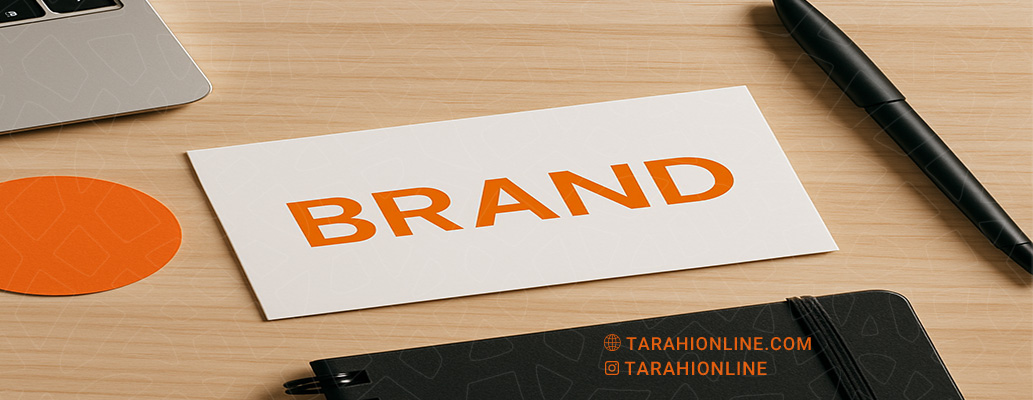
In today’s competitive world, branding is one of the most critical factors for business success. A brand is an identity that distinguishes a company from its competitors and creates a unique place in the minds of its audience. One of the key elements in branding is the logotype. But the question remains: Is relying solely on a logotype sufficient to build a strong and lasting brand? In this article, we explore the role of logotypes in branding, their limitations, and the necessity of incorporating other brand identity elements.
What is a Logotype?
A logotype is a type of logo that typically consists of the brand’s name in a specific font or custom-designed typography. Unlike pictorial or combination logos, a logotype focuses entirely on typography. Famous examples of logotypes include brands like Coca-Cola, Google, and FedEx, which use text-based designs to convey their identity.
Logotypes are often a popular choice for brands due to their simplicity, readability, and versatility across various media. But can this visual element alone carry the full weight of a brand’s identity?
The Role of Logotypes in Branding
As a core component of a brand’s visual identity, logotypes play several important roles:
-
Creating Recognition: A well-designed logotype can quickly become memorable and serve as a symbol of the brand. For instance, Google’s simple and distinctive logotype instantly conveys the company’s identity without needing further explanation.
-
Conveying Brand Personality: The choice of font, color, and design style in a logotype can reflect the brand’s values and personality. For example, Chanel’s classic and minimalist logotype evokes a sense of luxury and elegance.
-
Versatility in Application: Due to their text-based nature, logotypes perform well across different sizes and media—from business cards to billboards—while maintaining readability.
-
Differentiation from Competitors: A unique logotype can set a brand apart from its competitors and contribute to establishing a distinct identity.
Limitations of Relying Solely on a Logotype
Despite its many advantages, relying exclusively on a logotype for branding has its limitations:
-
Inability to Fully Convey the Brand Story: A logotype alone cannot communicate all aspects of a brand’s story, values, or mission. For example, while a logotype may effectively display the brand name, it cannot evoke emotions or experiences associated with the brand without complementary strategies.
-
Dependence on Prior Recognition: Logotypes may have limited impact if the brand is not yet well-known. New brands often require additional visual and communicative elements to establish themselves in the audience’s mind.
-
Competition in a Crowded Market: In markets where multiple brands use similar logotypes, standing out with just a logotype can be challenging. For instance, many tech companies use modern sans-serif fonts, which can appear similar to one another.
-
Lack of Sufficient Visual Appeal: In some cases, logotypes, due to their textual nature, may fail to create the visual appeal needed to capture audience attention, especially compared to pictorial or combination logos.
The Importance of Other Branding Elements
To create a strong brand, a logotype must be part of a comprehensive branding strategy that includes the following elements:
-
Complete Visual Identity: In addition to a logotype, using a defined color palette, icons, imagery, and graphic patterns helps create a cohesive visual identity. For example, Nike not only uses its logotype but also its iconic Swoosh symbol and specific colors to reinforce its identity.
-
Messaging and Tone of Voice: The way a brand communicates verbally, from slogans to website content, plays a significant role in conveying its personality. Apple, for instance, uses a simple and inspirational tone of voice to communicate its values of innovation and creativity.
-
Customer Experience: Successful branding goes beyond visual elements and depends on the experience customers have when interacting with the brand. Product quality, customer service, and digital interactions all contribute to the brand.
-
Marketing Strategy: Using a logotype in marketing campaigns, social media, and advertisements helps strengthen brand recognition. However, without a proper strategy, even the best logotypes cannot make a significant impact on their own.
Case Studies: Successful Brands with Logotypes
Examining a few successful brands that have used logotypes as a central part of their identity can provide valuable insights:
-
Coca-Cola: The handwritten, classic logotype of Coca-Cola has been a symbol of joy and refreshment for over a century. However, the brand’s success is not limited to its logotype; creative marketing campaigns, distinctive packaging, and a strong presence in popular culture have all contributed to its identity.
-
Google: Google’s simple and colorful logotype represents accessibility and innovation. Yet, this logotype works alongside the user interface of Google’s products, targeted advertising, and exceptional user experience to drive the brand’s success.
-
Amazon: Amazon’s logotype, with its famous arrow stretching from A to Z, symbolizes the company’s vast range of products and services. However, Amazon’s brand identity is also tied to its seamless shopping experience, fast services, and technological innovations.
Recommendations for Brands
-
Design a Distinctive Logotype: Invest in creating a unique logotype that reflects the brand’s personality.
-
Build a Comprehensive Visual Identity: Combine the logotype with a color palette, icons, and graphic patterns to strengthen the brand’s identity.
-
Focus on Customer Experience: Ensure that all touchpoints with customers, from products to services, align with the brand’s values.
-
Develop a Strong Marketing Strategy: Use the logotype in creative campaigns to boost brand recognition.
By following these steps, brands can leverage a logotype as a foundation for building a powerful and lasting identity, while recognizing that branding extends far beyond a single logo.
A logotype, as one of the most important elements of visual identity, plays a crucial role in brand recognition and differentiation. However, relying solely on a logotype is not enough to create a strong and enduring brand. Successful branding requires a combination of a cohesive visual identity, effective messaging, high-quality customer experiences, and a targeted marketing strategy. A logotype can serve as a powerful starting point, but to build an impactful brand, it must be used alongside other identity and strategic elements. 
The Tarahi Online graphic and logo design team, with over ten years of experience in professional graphic and logo design, is ready to assist you and bring your ideas to life. Contact us to submit your request or place an order.
